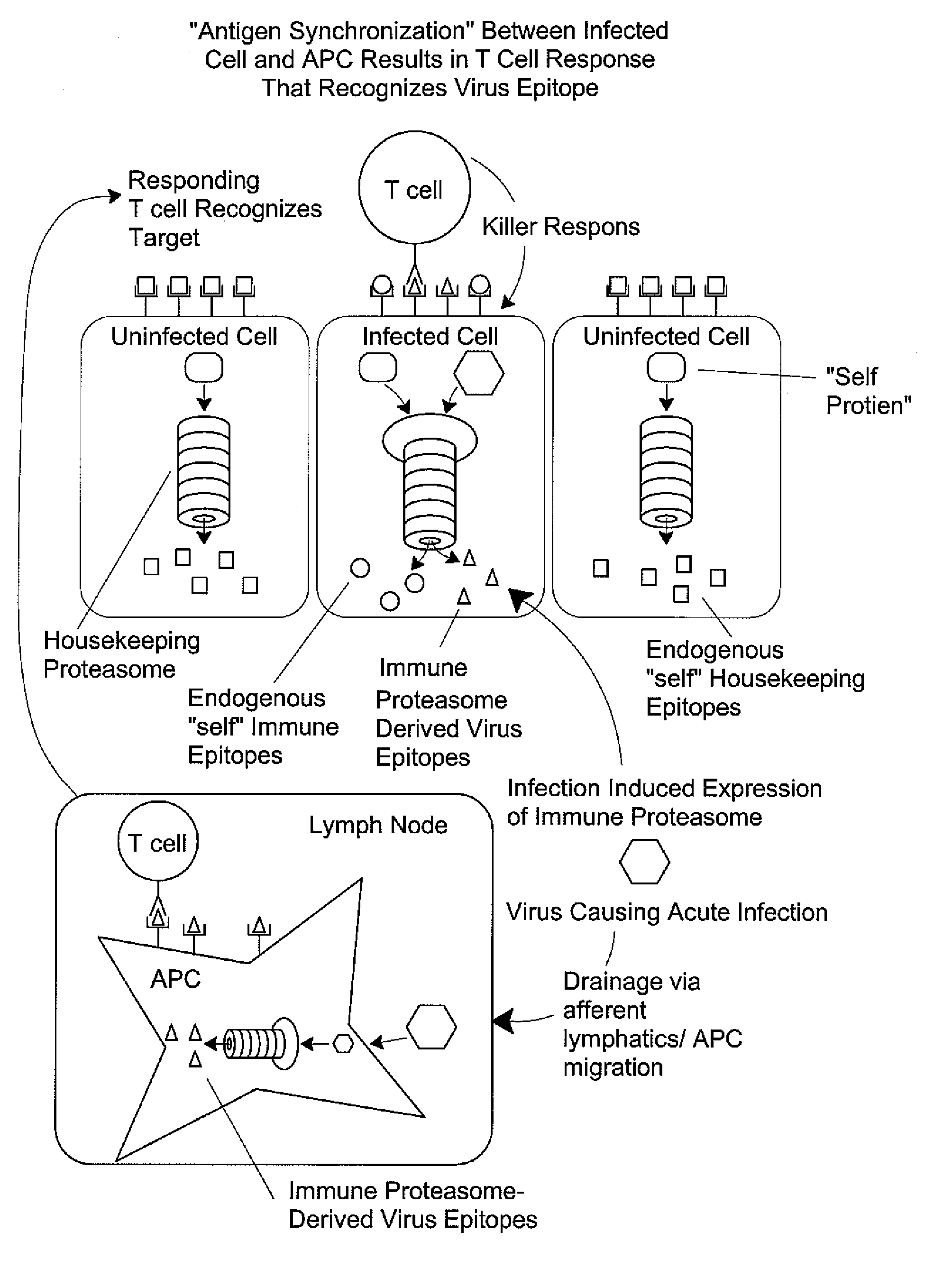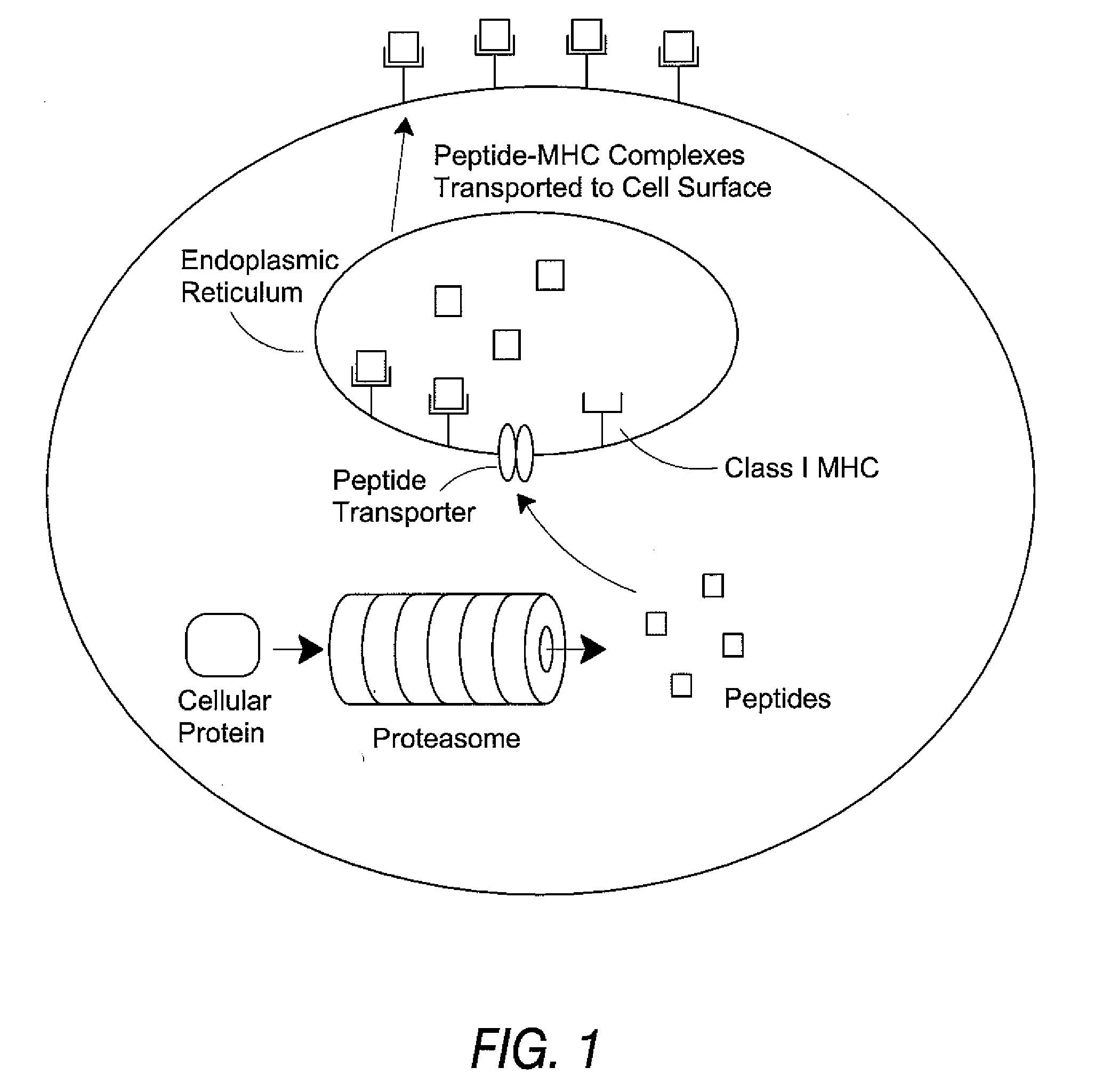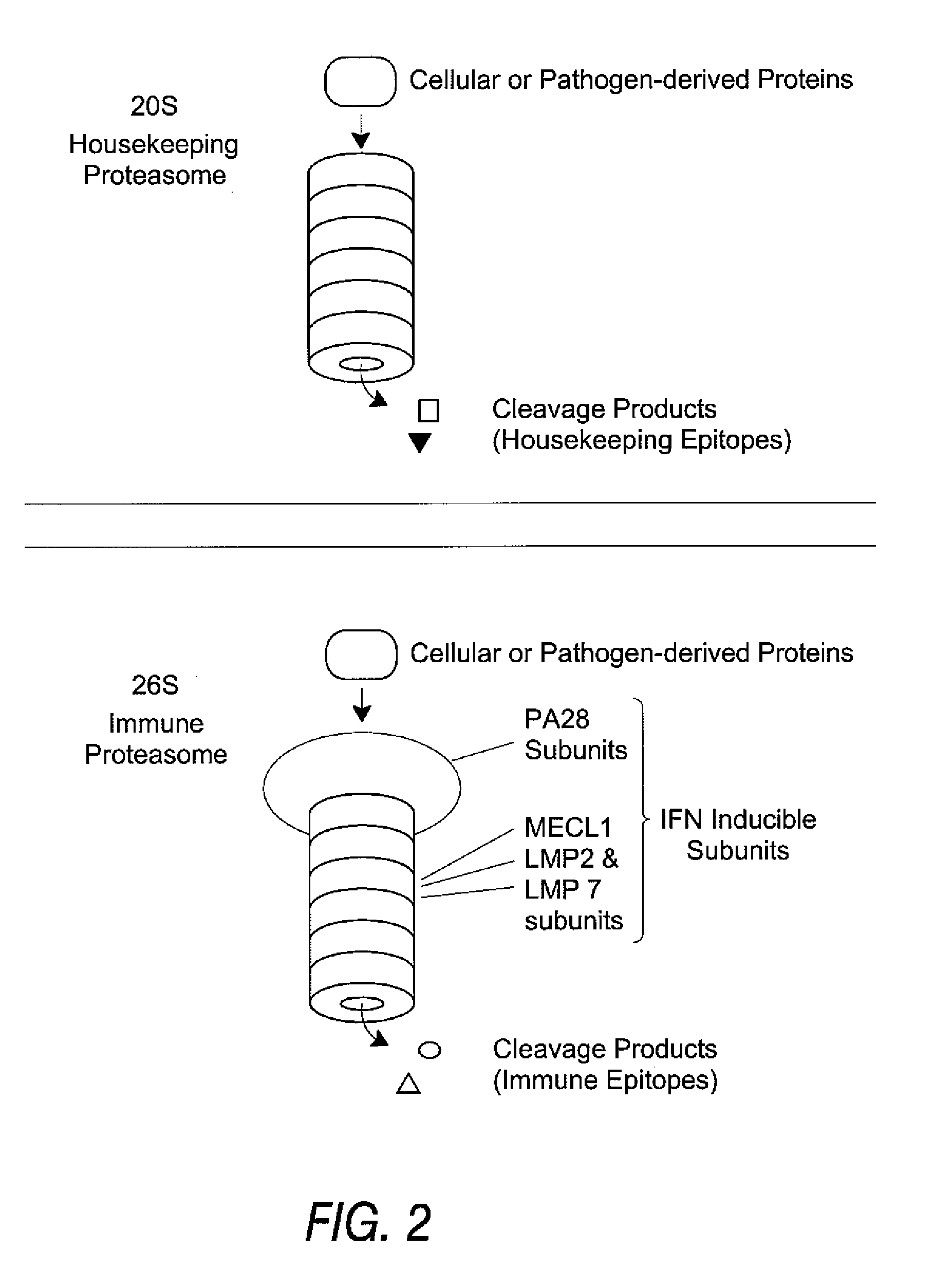Epitope synchronization in antigen presenting cells
a technology of antigen presenting cells and epitopes, which is applied in the direction of antibody medical ingredients, drug compositions, immunological disorders, etc., can solve the problems of evading the immune system, unable to select and effectively administer minimal epitopes for use as viral vaccines, and unable to achieve the effect of promoting a prolonged, directed cytotoxic t cell respons
- Summary
- Abstract
- Description
- Claims
- Application Information
AI Technical Summary
Benefits of technology
Problems solved by technology
Method used
Image
Examples
example 1
Proteolytic Characterization of an HLA Epitope as a Housekeeping Epitope or an Immune Epitope
[0136] Using the procedures described below, a synthetic peptide of 13 amino acids or more is prepared, containing the candidate HLA epitope centrally. Proteasomes are prepared from cells expressing each type of proteasome, for example red blood cells and Raji cells for housekeeping and immune proteasomes, respectively. The peptide is digested with the proteasome preparations and the resultant fragments identified by mass spectrometry. If one of those fragments is co-C-terminal with the HLA epitope, and is produced in significant yield in the preparation containing a housekeeping proteasome, then the HLA epitope is a housekeeping epitope. Similarly, if one of those fragments is co-C-terminal with the HLA epitope and is produced in significant yield by the immune proteasome, and is not produced in significant yield by the housekeeping proteasome, then the HLA epitope is a immune epitope.
[01...
example 2
Elution of HLA Epitopes from Tumors, Tissue Samples, Immortalized Cell Lines, or Tumor Cell Lines
[0150] Rather than generating HLA epitopes with in vitro proteolysis, they can be identified after elution from the HLA of tumors, tissue samples, tumor cell lines or other immortalized cell lines using mass spectrometry methods. While a variety of such methods can be used, the most powerful method of identifying epitopes from the surface of cells involves capillary or nanocapillary HPLC ESI mass spectrometry and on-line sequencing, as described in the published literature. Elution procedures for solubilized HLA and intact cells are also described in Falk, K. et al. Nature 351:290, 1991 and in U.S. Pat. No. 5,989,565, respectively. Not described in the literature, however, is the need to identify the type proteasome expressed in the cells undergoing peptide elution and analysis, so as to determine if the epitopes identified are housekeeping epitopes, which are needed to make effective v...
example 3
IFN Induction Test
[0151] Another assay to distinguish between housekeeping epitopes and immune epitopes is to test the ability of anti-peptide CTL to kill cells expressing the TAA in question. IFN can be used to induce expression of the immune proteasome (assuming it is not already constitutively expressed) and CTL recognition of the induced and uninduced cells can be compared. As above, proteasome type should be confirmed, e.g., by western blotting. If the IFN-induced cells are killed preferentially, the peptide constitutes an immune epitope. If the non-induced cells are killed preferentially, the peptide constitutes a housekeeping epitope. Some epitopes can be produced by both proteasomes at differing efficiencies, and in such cases cytolytic activity is observed against both populations. Such epitopes are classified as housekeeping epitopes since they are present on peripheral target cells.
PUM
| Property | Measurement | Unit |
|---|---|---|
| Composition | aaaaa | aaaaa |
| Immunogenicity | aaaaa | aaaaa |
Abstract
Description
Claims
Application Information
 Login to View More
Login to View More - R&D
- Intellectual Property
- Life Sciences
- Materials
- Tech Scout
- Unparalleled Data Quality
- Higher Quality Content
- 60% Fewer Hallucinations
Browse by: Latest US Patents, China's latest patents, Technical Efficacy Thesaurus, Application Domain, Technology Topic, Popular Technical Reports.
© 2025 PatSnap. All rights reserved.Legal|Privacy policy|Modern Slavery Act Transparency Statement|Sitemap|About US| Contact US: help@patsnap.com



